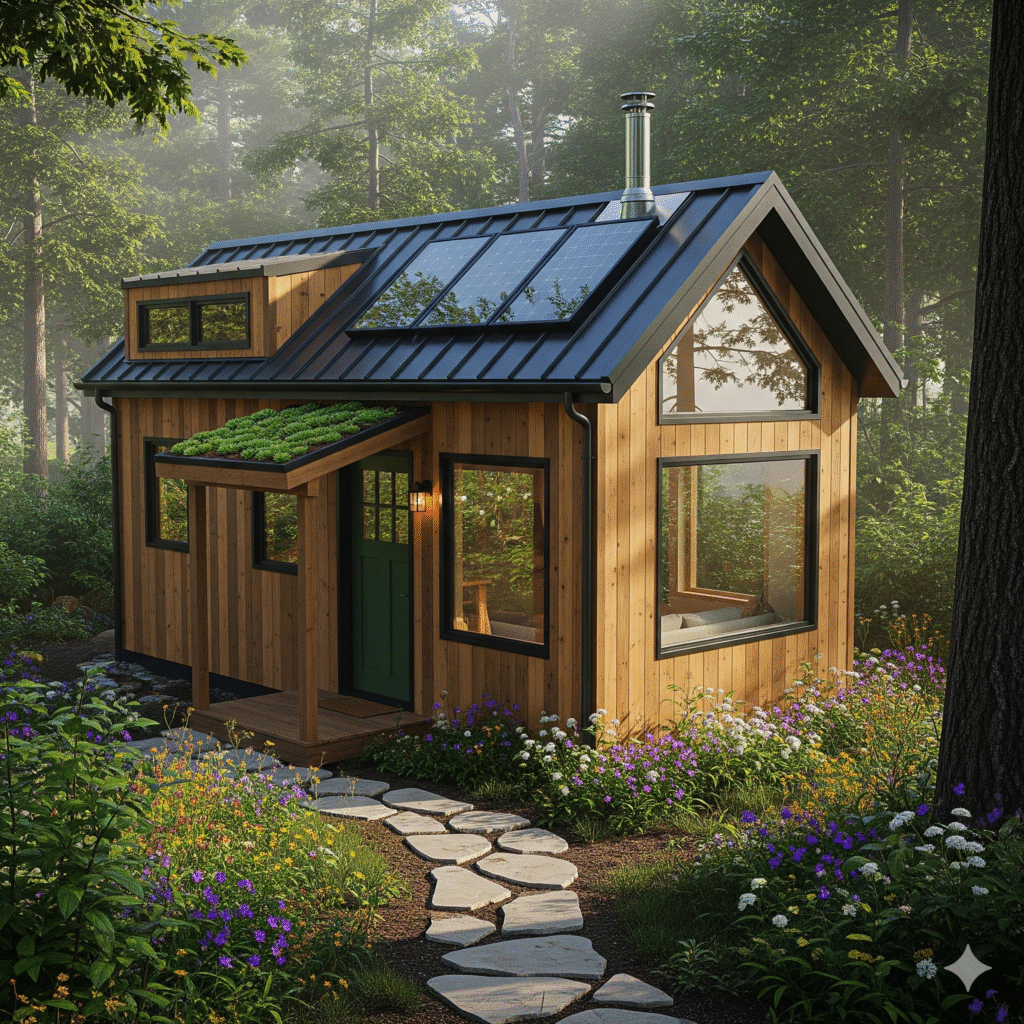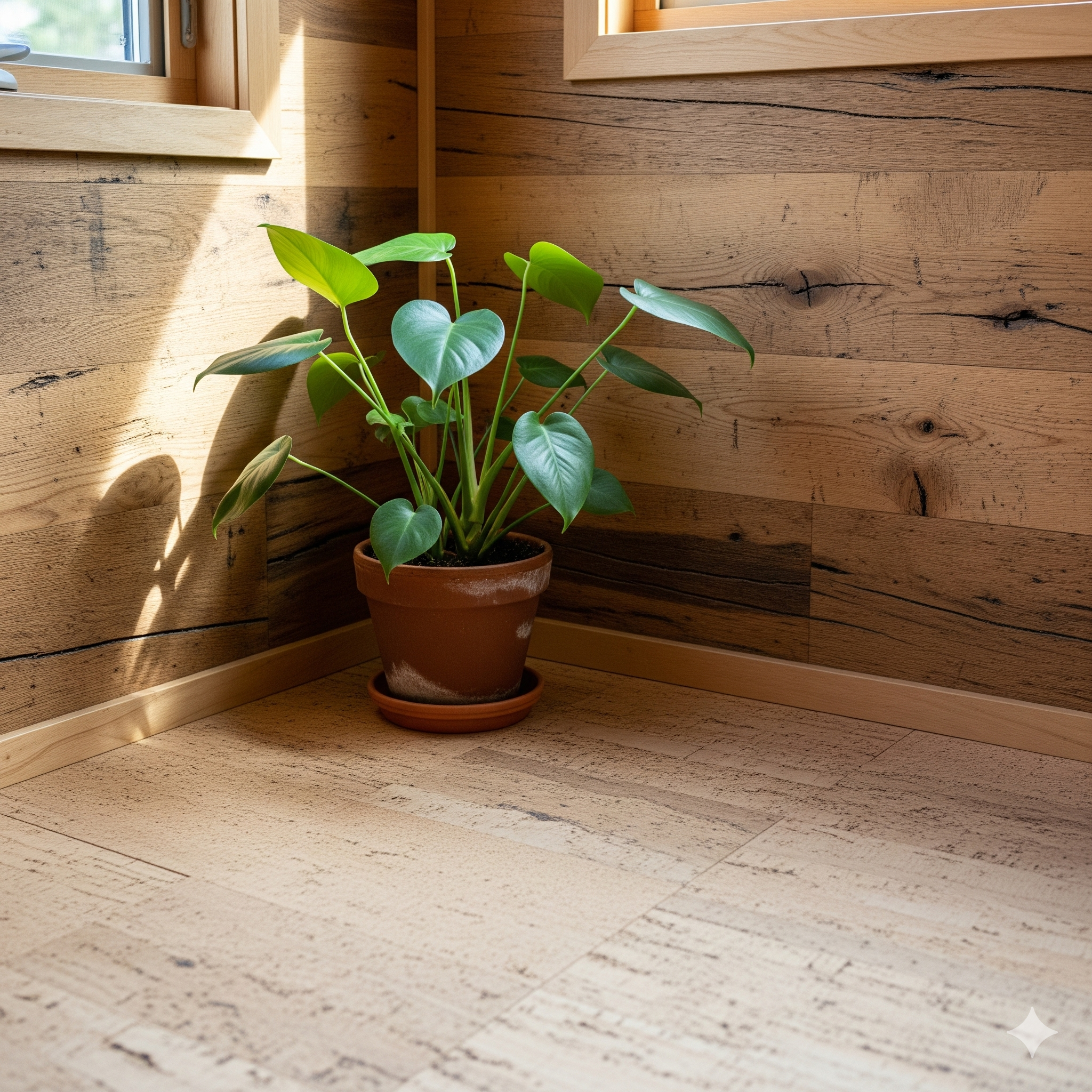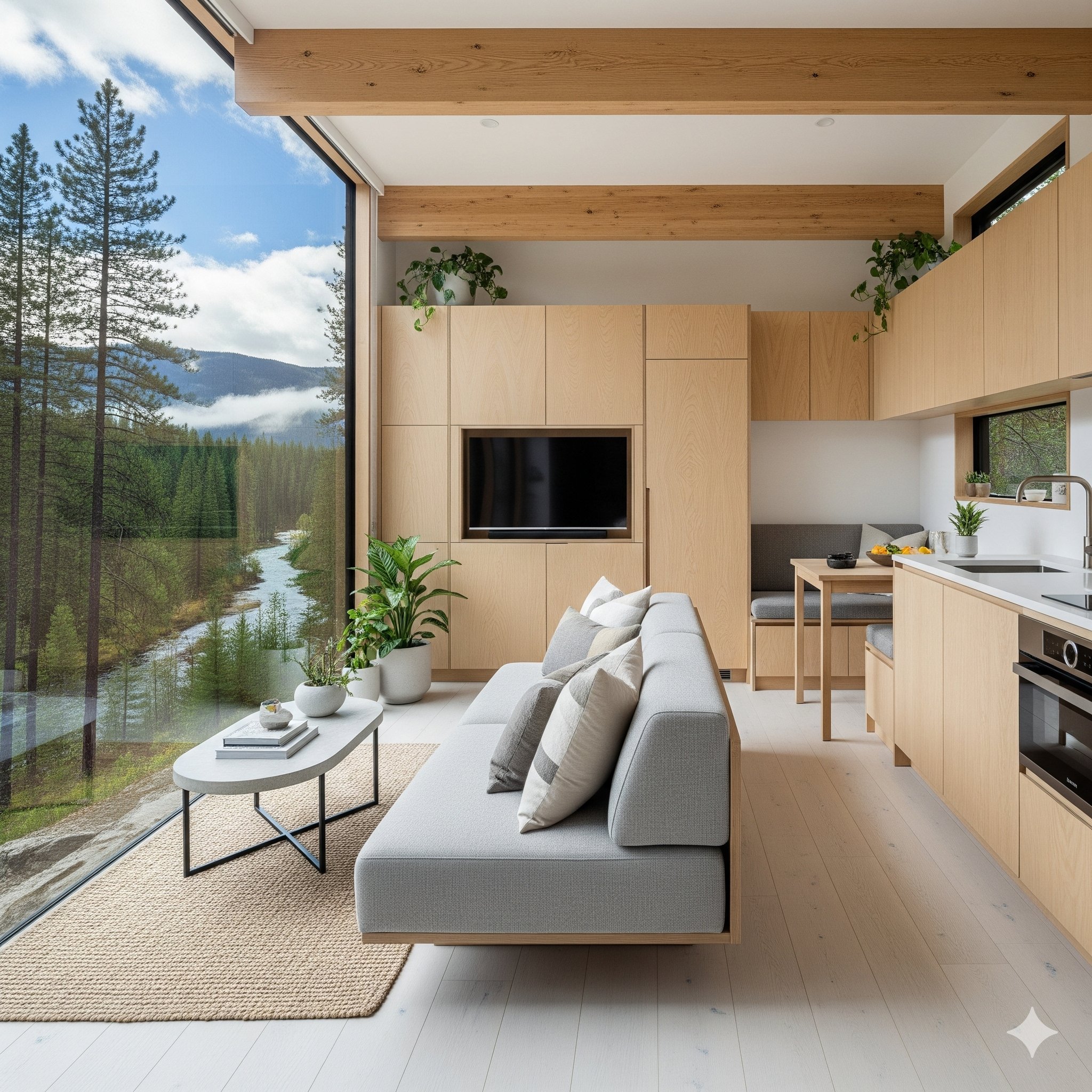Eco Friendly Tiny Home: A Beginner’s Guide
Build a truly eco friendly tiny home with our beginner’s guide. Explore sustainable materials, solar power, and water conservation for your small house.
More Than Small: A Beginner’s Guide to a Truly Eco-Friendly Tiny Home
The tiny house movement is deeply rooted in the principles of sustainability. At its core, living small is an act of conservation—using fewer resources, creating less waste, and reducing our overall environmental footprint. But a truly eco friendly tiny home goes beyond just its small size. It is a consciously designed and constructed dwelling where every choice, from the insulation in the walls to the water coming from the tap, is made with the health of our planet in mind. It’s about creating a holistic, self-sufficient, and beautiful living system.
At NeatTinyHome.com, we believe that sustainability and style go hand-in-hand. This guide is for the aspiring tiny home builder who wants to create a home that is not just small, but also smart and sustainable. We will explore the foundational pillars of green building, tailored for a small footprint. We’ll cover sustainable material choices, renewable energy systems, water conservation techniques, and passive design principles that will help you build a truly sustainable small house. Whether you’re planning an off-grid homestead or a green backyard cottage, these ideas will help you get started on the right path.
The Foundation of Green Building: Sustainable Materials
The journey to an eco friendly tiny home begins with the materials you choose. Conventional construction is often laden with products that have high embodied energy and contain volatile organic compounds (VOCs) that can off-gas for years. A green approach prioritizes materials that are renewable, recycled, non-toxic, and sourced locally whenever possible. For framing, consider using wood certified by the Forest Stewardship Council (FSC), which ensures it comes from responsibly managed forests. For insulation, instead of foam or fiberglass, explore natural alternatives like sheep wool, cork, or denim insulation made from recycled blue jeans. These materials are not only effective but also create a healthier indoor air quality. From my experience, one of the most impactful choices is reclaimed wood. Using salvaged wood for floors, walls, or countertops not only diverts material from the landfill but also adds immense character and history to your sustainable small house.
Harnessing Nature: Energy and Water Systems
A core goal of an eco friendly tiny home is to minimize its reliance on public utilities. This means generating your own power and responsibly managing your own water. The most common path to energy independence is through a solar power system. With the falling costs and increasing efficiency of photovoltaic technology, creating a solar-powered home is more accessible than ever. Companies like Renogy offer complete kits and learning centers that can help you design a system perfectly sized for your tiny home’s needs. Water independence is typically achieved through rainwater harvesting, where you collect, filter, and store rainwater for all your household needs. To complete the cycle, a composting toilet is essential. Models from pioneers like Nature’s Head use no water and turn waste into a valuable soil amendment, completely eliminating the concept of blackwater. The table below outlines these core systems.
| Sustainable System | Primary Goal | Key Components |
|---|---|---|
| Solar Power | Energy Independence & Zero Emissions | PV Panels, Battery Bank, Inverter, Charge Controller |
| Rainwater Harvesting | Water Self-Sufficiency | Roof, Gutters, Pre-Filter, Cistern, Multi-Stage Filter |
| Greywater Recycling | Water Conservation & Reuse | 3-Way Diverter Valve, Mulch Basin or Branched Drain System |
| Composting Toilet | Eliminate Blackwater & Conserve Water | Separating Toilet Unit, Composting Medium (e.g., coco coir) |
Closing the Loop: Greywater and Passive Design
To further reduce your water consumption, a greywater recycling system is a fantastic addition. This is a simple system that takes the relatively clean wastewater from your showers and sinks and diverts it to water your non-edible plants, trees, and landscaping. As detailed in guides from home experts like This Old House, these systems are a simple and effective way to reuse a precious resource. Beyond these active systems, you can dramatically reduce your energy needs through smart, passive design. This means designing your home to work *with* the climate, not against it. It includes orienting your tiny house to maximize sun exposure in the winter for passive heating, using strategic roof overhangs to provide shade in the summer, and placing windows to encourage natural cross-ventilation. These principles, which are central to hyper-sustainable building standards like the Living Building Challenge, require no technology but can have a massive impact on your home’s long-term energy consumption.
Final Thoughts: Building a Better Small Future
Creating an eco friendly tiny home is a deeply rewarding journey. It pushes you to think critically about every choice and to find innovative solutions that are kinder to the earth. The result is more than just a house; it’s a statement of your values and a testament to the fact that a comfortable, modern life can be lived in harmony with the natural world. A sustainable small house is not about sacrifice; it’s about thoughtful, intelligent design that creates a healthier home for you and a healthier future for our planet.
What’s Your Green Dream?
Which aspect of building an eco friendly tiny home excites you the most? Is it the sustainable materials, the off-grid technology, or something else? Share your thoughts in the comments!
Frequently Asked Questions
Is building an eco-friendly tiny home more expensive?
It can have a higher upfront cost. Materials like sheep wool insulation or a full solar power system can be more expensive initially than their conventional counterparts. However, these investments pay for themselves over time through significantly lower (or zero) utility bills and a more durable, healthier home.
What is a “green roof”?
A green roof, or living roof, is a roof that is partially or completely covered with vegetation planted over a waterproofing membrane. It provides excellent natural insulation, helps manage stormwater runoff, creates a habitat for wildlife, and can be a beautiful feature on a sustainable small house.
How can I make my existing tiny home more eco-friendly?
Start with small changes! Switch to all LED lighting, install low-flow fixtures on your sinks and shower, start a small composting system for food scraps, and be mindful of your energy and water consumption. Even without a full solar setup, these small habits make a big difference.





Post Comment